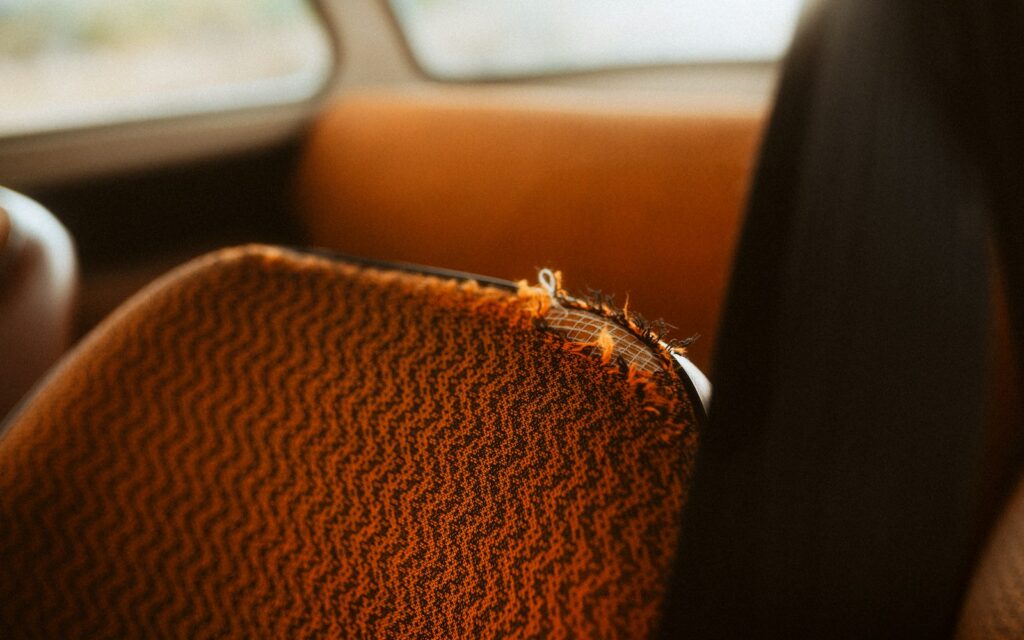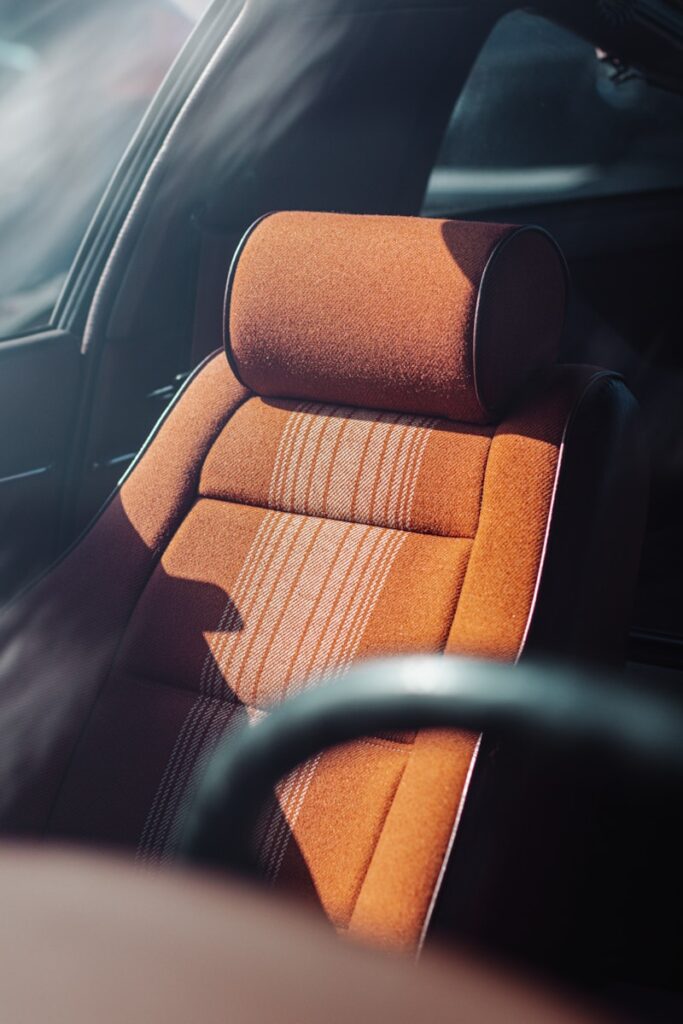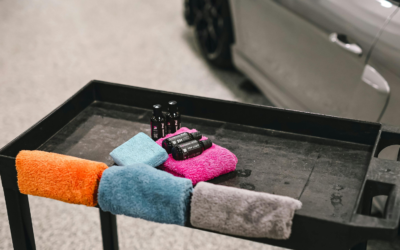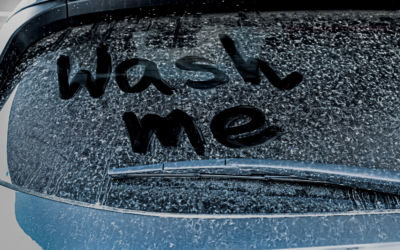Your cloth car seats endure daily wear and tear from spills, dirt, dust, and everyday use. Over time, these fabric surfaces can harbor stubborn stains, unpleasant odors, and accumulated grime that makes your vehicle’s interior look tired and uninviting. Learning how to clean cloth car seats properly can restore your car’s appearance, maintain its value, and create a more pleasant driving experience.
Whether you’re dealing with coffee stains, pet hair, food spills, or general dirt buildup, cleaning cloth upholstery requires the right techniques and materials. Unlike leather seats, cloth seats are more forgiving and can handle various cleaning solutions, but they also require specific approaches to avoid damage and ensure thorough cleaning.
This comprehensive guide will walk you through everything you need to know about cleaning cloth car seats, from basic maintenance to tackling the most stubborn stains. You’ll discover professional techniques, learn about effective cleaning solutions, and understand when to call in the experts for a deep clean.
Understanding Your Cloth Car Seats
Before diving into cleaning methods, it’s important to understand what you’re working with. Cloth car seats typically feature synthetic fabrics, cotton blends, or microfiber materials. Each material responds differently to cleaning solutions and techniques.
Most modern vehicles use synthetic fabric blends that resist stains better than natural fibers. However, older cars might have cotton or wool upholstery that requires gentler treatment. Check your vehicle’s manual or look for care labels to identify the specific material and any manufacturer recommendations.
The key to successful cloth seat cleaning lies in understanding that fabric absorbs liquids and traps particles within its fibers. This means surface cleaning alone won’t address deep-seated dirt and odors. You’ll need techniques that penetrate the fabric while avoiding oversaturation that could lead to mold growth or permanent water stains.
Essential Supplies for Cleaning Cloth Car Seats
Having the right tools and cleaning solutions makes the difference between amateur results and professional-quality cleaning. Here’s what you’ll need for most cloth seat cleaning jobs:
Basic Cleaning Supplies:
- Vacuum cleaner with upholstery attachments
- Spray bottles for mixing solutions
- Clean microfiber towels and cotton balls
- Soft-bristled brush or old toothbrush
- Bucket for mixing cleaning solutions
- Rubber gloves to protect your hands
Cleaning Solutions:
- Laundry detergent (liquid works best)
- Dish soap (gentle, grease-cutting formula)
- Baking soda for odor absorption
- White vinegar for natural cleaning power
- Rubbing alcohol for disinfection and quick drying
- Commercial upholstery cleaners (optional)
For Tough Stains:
- Nail polish remover (use sparingly on synthetic fabrics)
- Hydrogen peroxide for blood stains
- Club soda for fresh spills
Always test any cleaning solution on a hidden area of your cloth seats before applying it to visible surfaces. This prevents potential damage or discoloration that could make your cleaning efforts counterproductive.
Step-by-Step Guide to Basic Cloth Seat Cleaning and How to Keep Your Car clean
Step 1: Prepare Your Vehicle
Start by removing all items from your car seats and surrounding areas. Take out floor mats, seat covers, and any loose objects that might interfere with cleaning. Open all doors to ensure proper ventilation and faster drying times.
If possible, park your vehicle in a shaded area. Direct sunlight can cause cleaning solutions to dry too quickly, potentially leaving residue or water spots on your cloth upholstery.
Step 2: Vacuum Thoroughly
Use your vacuum’s upholstery attachment to remove surface dirt, dust, and debris from your cloth car seats. Pay special attention to crevices where the seat back meets the cushion, as these areas tend to collect crumbs and small particles.
Don’t forget to vacuum the seat backs, headrests, and any armrests. Use a brush attachment or soft-bristled brush to loosen stubborn dirt before vacuuming. This step removes the bulk of dry soil and prevents it from becoming muddy when you introduce cleaning solutions.
Step 3: Mix Your Cleaning Solution
For general cleaning, mix one tablespoon of liquid laundry detergent with one gallon of warm water. This creates an effective, gentle solution that won’t damage most cloth upholstery. Alternatively, mix equal parts warm water and white vinegar for a natural cleaning approach.
For heavily soiled seats, add a teaspoon of dish soap to boost the solution’s cleaning power. Avoid using hot water, which can set stains permanently and may cause some fabrics to shrink or fade.
Step 4: Test and Apply the Solution
Before cleaning the entire seat, test your solution on an inconspicuous area. Wait a few minutes to ensure the fabric doesn’t discolor or react negatively to the cleaner.
Once you’ve confirmed the solution is safe, spray it evenly across the cloth surface. Work in sections to prevent the solution from drying before you can clean it properly. Don’t oversaturate the fabric—you want it damp, not soaking wet.
Step 5: Scrub and Clean
Using a soft-bristled brush or clean cloth, gently scrub the cleaning solution into the fabric using circular motions. Focus on visibly dirty areas, but clean the entire seat surface to ensure even results.
For stubborn areas, let the solution sit for 5-10 minutes before scrubbing. This gives the cleaner time to break down dirt and stains. Avoid aggressive scrubbing that could damage the fabric fibers or push dirt deeper into the material.
Step 6: Rinse and Extract
After scrubbing, use clean water to rinse the cleaning solution from your cloth seats. You can spray clean water and immediately blot it away with clean towels, or use a wet/dry vacuum if available to extract both the cleaning solution and loosened dirt.
This step is crucial because leaving cleaning residue in your cloth upholstery can attract more dirt and create a sticky feeling. Continue rinsing until the water runs clear and no suds remain.
Step 7: Dry Properly
Use clean, dry towels to blot away as much moisture as possible. Press firmly to absorb water from deep within the fabric fibers. Replace towels as they become saturated.
Leave your car doors open and allow the seats to air dry completely. Depending on humidity and temperature, this process can take 2-6 hours. You can speed drying by using fans or parking in a well-ventilated area, but avoid direct heat sources that might damage the fabric.
Tackling Stubborn Stains on Cloth Car Seats
Some stains require special attention and specific cleaning approaches. Here’s how to handle the most common tough stains:
Food and Beverage Stains
Coffee, soda, and food stains are among the most common cloth seat problems. For fresh spills, immediately blot (don’t rub) with a clean cloth to absorb as much liquid as possible.
Create a solution of two parts cold water to one part white vinegar. Spray the stained area and let it sit for 10 minutes. Scrub gently with a soft brush, then rinse with clean water and blot dry.
For set-in beverage stains, mix equal parts rubbing alcohol and water. Apply with a cotton ball, working from the outside of the stain toward the center to prevent spreading.
Grease and Oil Stains
Grease stains require immediate attention to prevent permanent damage. Start by sprinkling baking soda generously over the stain to absorb excess oil. Let it sit for at least 30 minutes, then vacuum away the powder.
Mix a solution of warm water and grease-cutting dish soap. Apply it to the stain and let it penetrate for 15 minutes. Scrub with a soft brush, working the solution deep into the fabric fibers. Rinse thoroughly with clean water and blot dry.
Blood Stains
Blood stains require cold water treatment—never use warm or hot water, which will set the protein permanently. Blot fresh blood with cold water and clean cloth.
For dried blood, create a paste using cold water and laundry detergent. Apply the paste to the stain and let it sit for 30 minutes. Scrub gently with a soft brush, then rinse with cold water. Repeat as necessary.
Hydrogen peroxide can be effective on blood stains, but test it on a hidden area first, as it may bleach some fabrics.
Ink Stains
Ink stains can be challenging, but rubbing alcohol often provides good results. Dab (don’t rub) the stain with a cotton ball soaked in rubbing alcohol. The ink should begin to dissolve and transfer to the cotton ball.
Continue dabbing with fresh cotton balls until no more ink transfers. Rinse the area with clean water and blot dry. For stubborn ink stains, nail polish remover may work, but use it sparingly and test first.
Pet-Related Stains and Odors
Pet accidents require thorough cleaning to remove both visible stains and lingering odors. Start by blotting up as much liquid as possible with absorbent towels.
Mix equal parts white vinegar and warm water in a spray bottle. Saturate the affected area and let it sit for 10-15 minutes. The vinegar will neutralize odor-causing bacteria and break down the stain.
After the vinegar treatment, sprinkle baking soda over the area and let it sit overnight to absorb remaining odors. Vacuum the baking soda the next day, then rinse the area with clean water and dry thoroughly.

Deep Cleaning Techniques for Heavily Soiled Cloth Seats
When basic cleaning isn’t enough, these advanced techniques can restore even heavily soiled cloth car seats:
Steam Cleaning Method
Steam cleaning provides deep penetration and sanitization without harsh chemicals. If you have access to a steam cleaner with upholstery attachments, this method can be highly effective.
Pre-treat any visible stains using the methods described above. Fill the steam cleaner with clean water according to the manufacturer’s instructions. Work in small sections, allowing the steam to penetrate the fabric before extracting the loosened dirt and moisture.
Steam cleaning kills bacteria and dust mites while removing deep-seated dirt that regular cleaning can’t reach. Allow extra drying time after steam cleaning, as this method introduces more moisture into the fabric.
Foam Cleaning Technique
Commercial upholstery foam cleaners can be effective for heavily soiled cloth seats. These products create a rich foam that lifts dirt and stains without oversaturating the fabric.
Apply the foam according to the product instructions, typically working it into the fabric with a soft brush. Allow the foam to work for the recommended time, then vacuum away the residue along with the loosened dirt.
This method works well for seats that can’t handle much moisture, as foam cleaners use less water than traditional liquid solutions.
Professional-Style Extraction Cleaning
If you have access to a carpet/upholstery extractor, you can achieve professional-quality results at home. These machines inject cleaning solution into the fabric and immediately extract it along with dirt and stains.
Use a commercial upholstery cleaner designed for extraction machines, or create your own solution using one cup of warm water, one tablespoon of laundry detergent, and one tablespoon of white vinegar.
Work in overlapping passes to ensure thorough cleaning, and make several extraction-only passes to remove as much moisture as possible.
Preventive Maintenance for Cloth Car Seats
Regular maintenance prevents the need for intensive deep cleaning and keeps your cloth car seats looking their best:
Weekly Maintenance
Vacuum your cloth seats weekly to remove surface dirt, crumbs, and dust before they work their way deep into the fabric. Use appropriate attachments to clean crevices and hard-to-reach areas.
Keep a small handheld vacuum in your vehicle for immediate cleanup of spills and messes. Quick action prevents stains from setting and makes regular cleaning more effective.
Monthly Deep Maintenance
Once monthly, perform a more thorough cleaning routine. Vacuum thoroughly, then wipe down all cloth surfaces with a slightly damp microfiber cloth to remove dust and light soiling.
Check for any developing stains or problem areas and address them promptly using the appropriate cleaning techniques. Regular attention prevents minor issues from becoming major cleaning challenges.
Seasonal Protection
Consider applying a fabric protector spray designed for automotive upholstery. These products create a barrier that repels liquids and makes cleanup easier when spills occur.
Reapply fabric protection every 6-12 months, or after deep cleaning sessions. Always test protector sprays on a hidden area first to ensure they don’t alter the fabric’s appearance or texture.
When to Seek Professional Help
While most cloth seat cleaning can be handled at home, certain situations call for professional intervention:
Extensive Damage or Staining
If your cloth seats have extensive staining, water damage, or have been neglected for years, professional cleaning may be your best option. Professionals have access to commercial-grade equipment and cleaning solutions that can restore even severely damaged upholstery.
Mold and Mildew Issues
If you discover mold or mildew in your cloth seats, don’t attempt to clean it yourself. Mold can be a health hazard, and improper cleaning can spread spores throughout your vehicle. Professional cleaners have the equipment and expertise to safely remove mold while preventing its return.
Valuable or Vintage Vehicles
If you own a classic car or high-value vehicle with original cloth upholstery, professional cleaning is worth the investment to preserve the material and maintain the vehicle’s value.
Time and Convenience Factors
Sometimes, professional cleaning is simply more convenient. Full-service car washes and detail centers like Love My Car Car Wash in Germantown, MD, offer comprehensive interior cleaning services that save you time and effort while delivering professional results.

Maintaining Clean Car Seats Long-Term
Keeping your cloth car seats clean requires ongoing attention and good habits:
Immediate Response to Spills
The key to preventing permanent stains is immediate action. Keep clean towels or napkins in your vehicle to blot spills as soon as they occur. The faster you act, the less likely a spill will become a permanent stain.
Regular Inspection and Cleaning
Make seat inspection part of your regular car maintenance routine. Look for developing stains, wear patterns, or odor issues that need attention. Addressing problems early prevents them from becoming major issues.
Use Seat Covers When Appropriate
For high-wear situations like transporting pets, moving day, or beach trips, consider using removable seat covers to protect your cloth upholstery. Quality seat covers can be washed separately and provide an extra layer of protection.
Control Environmental Factors
Keep your vehicle clean and well-ventilated to prevent odor and mold issues. Use sunshades to prevent excessive UV exposure that can fade and weaken cloth fibers over time.
Products and Brands for Cleaning Cloth Car Seats
To achieve professional-level results when cleaning your car’s cloth seats, it’s important to choose the right products. Here’s a list of seven top-rated products and brands that can help, along with links to their websites for easy purchasing:
Chemical Guys Fabric Clean Carpet and Upholstery Shampoo
This powerful cleaner removes tough stains and odors, leaving fabric fresh and spotless. Buy here
CarGuys Super Cleaner
Known for its versatility, this multi-surface cleaner works wonders on cloth car seats. Buy here
Meguiar’s Carpet & Upholstery Cleaner
A trusted brand, Meguiar’s delivers a fast-acting foam formula that lifts stains effortlessly. Buy here
Turtle Wax Power Out! Upholstery Cleaner
Complete with an integrated scrubbing brush, this all-in-one product is ideal for deep cleaning. Buy here
Bissell SpotClean ProHeat Portable Spot Cleaner
This portable device combines heat, suction, and cleaning formulas to tackle stubborn spots. Buy here
Blue Coral Upholstery Cleaner
Known for its quick-dry formula, this cleaner is perfect for eliminating tough stains efficiently. Buy here
Armor All Oxi Magic Upholstery Cleaner
Trusted for its stain-removing power, Armor All’s product restores cloth surfaces to their original look. Buy here
Using any of these products will help maintain your car’s interior, ensuring a fresh and clean driving experience. Always follow the manufacturer’s instructions for optimal results.
Transform Your Vehicle’s Interior | How To Clean Cloth Car Seats
Clean cloth car seats can dramatically improve your vehicle’s appearance, comfort, and value. With the right techniques, tools, and regular maintenance, you can keep your cloth upholstery looking fresh and inviting for years to come.
Remember that consistency is key—regular cleaning and immediate attention to spills and stains will prevent most major problems. When you do encounter stubborn stains or extensive soiling, don’t hesitate to use the advanced techniques outlined in this guide or seek professional help when needed.
Your vehicle is a significant investment, and maintaining its interior is just as important as caring for its mechanical components. Clean, well-maintained cloth seats contribute to a more pleasant driving experience and help preserve your car’s resale value. Start implementing these cleaning techniques today, and enjoy the satisfaction of driving in a fresh, clean environment.






